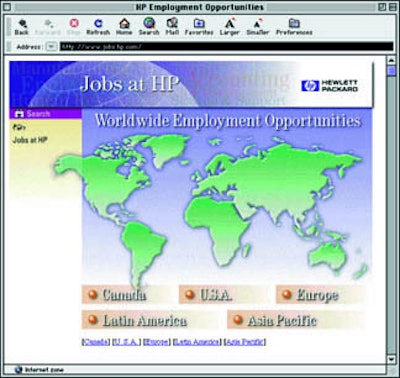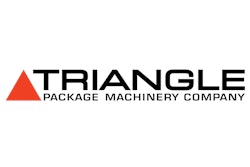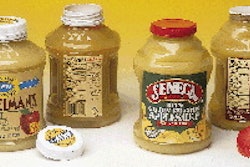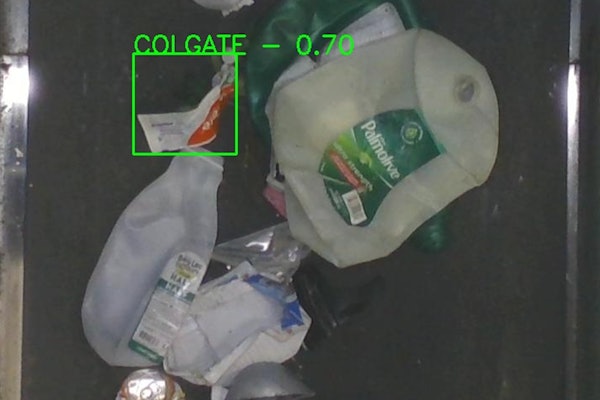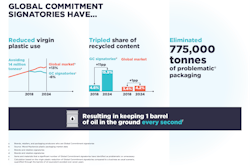Today's tight labor market (see story on p. 90) has launched a talent war. Winning in this war means attracting and retaining enough skilled people at all levels to keep a packaging department humming. Losing means stagnation. Packaging World editors conducted in-depth telephone interviews with nearly 30 companies over the past few months to see how the packaging community is faring in today's talent war. We tried to pinpoint strategies for attracting new hires to packaging functions. We also inquired about retention, a hot subject according to executive search firms we interviewed. Future installments in this exclusive series will explore that area. But it all starts with attracting talent in the first place, and this report focuses on precisely that. One thing we quickly learned is that some firms are mining what might be called "the college connection" more aggressively than ever (see sidebar on Procter & Gamble, p. 105). "We do the majority of our recruiting out of colleges and out of the co-op programs that we have," says Marty O'Connor of Kraft Foods. Based in Tarrytown, NY, he's a human resources officer responsible for package development personnel as well as R&D, process engineering and some elements of technical support. "We've always had a strong program at places like Michigan State and Rochester Institute of Technology. These and others [educational institutions] are the first places we go when we know we have to bring new people into the organization. We've had good luck in getting top-notch people coming out of those programs." At The Coca-Cola Co. in Atlanta, director of package development Ian Roberts also recognizes the value of the right universities. "We have an intern program here where we cycle through every six months a group of interns from MSU or Clemson or Rutgers," says Roberts. "This brings new ideas to us on a regular basis and provides us with a very good hiring pool. We keep in touch with past interns, so if an opportunity arises, we know where to go." At Coke, interns work pretty much as entry-level packaging engineers. They may be located at the company's Atlanta headquarters, says Roberts, or they may be running trials out in bottling plants or visiting with suppliers. New at college recruiting A relative newcomer to the college intern concept is North Dakota Growers of Carrington, ND. "This is our second year in a program called Students and Technology Transfer and Research," says Bobby Jarrett of the human resources department at this large pasta producer. "All the universities in the state participate. It brings engineering students into our packaging department, where they can be helpful when the packaging manager has multiple projects to manage and execute. "Last year we had two students helping with some ink-jet coding projects. Some of it involved specifying new equipment, for example. This summer, we just put in some robotic palletizing equipment, and our summer intern is working with our plant engineer to get that running. It's been very helpful in the short run, but the longer-term goal is to show students what we have to offer and get them thinking about returning here for a full-time position." It's too soon to say how well that will work, since the firm is only two years into the program. But Jarrett is optimistic. So is plant manager David Tressler. "The interns get a taste of our facility," he says, "a taste of what's going on here. They come away with a feel for what they can do for us, and how they might fit." Pharmaceutical giant Glaxo Wellcome, Research Triangle Park, NC, is another believer in nourishing a relationship with the nation's packaging schools. "Virtually all our new hires have been engineers who have been in co-op programs with us," says Bruce Cohen, director of packaging technology at Glaxo Wellcome. "Our co-op program typically involves one person for six months. We rotate between two packaging schools, and both seem to work out well. The students that are really good we try to bring back when we have an opening." At another large pharmaceutical firm, Toronto-based Torpharm, maintaining a relationship with local vocational colleges is a key to attracting packaging line operators. "Not only have we increased our contacts with these schools, we've also asked to be involved in course and curriculum design," says Janice Rooney, director of human resources and financial services at Torpharm. "It's a slow process, but we're getting there." According to Torpharm's David Mackay, manager of packaging machinery installation and maintenance, one difficulty he notes at a local college's packaging course for technicians is that the equipment for training is outdated. Pointing out such curriculum issues and brainstorming on solutions should be useful for the college and equally useful to Torpharm in building a stronger relationship with the school. Torpharm's outreach doesn't stop at schools, says Rooney. "We're interested in increasing our exposure not only with local colleges but with the community at large," she says. "We're placing more recruiting ads in the local papers." Also useful as a recruiting tool, say McKay and Rooney, is networking with parent company Apotex, also based in Toronto. "We participated with Apotex in a recruitment open house this year," says Rooney. "We had eleven-hundred-plus people attend over two nights. It was very helpful in terms of exposure." Recruiters' role While colleges and universities are useful sources to companies trying to fill entry-level titles in the packaging functions, sometimes it's a more experienced person who is required. In these cases recruiters are commonly relied upon. "The packaging schools can't meet all our needs," says Kraft's O'Connor. "When we're interested in bringing in people with very specific skills and experience because we're eyeing a new technology, we do some recruiting through search firms. A good example is when we were getting into plastic bottles and jars for the first time. There we dealt with recruiters who specialize in the food industry or in packaging, and we have good relationships with them." Vice president of production and engineering Gary Flickinger at Dean Foods, a food marketer and dairy products leader based in Franklin Park, IL, says that firm, too, relies on search firms occasionally, but only those familiar with similar industries. "Half the hiring we do at this point is in the packaging area," Flickinger says. "Over the past few years we concentrated on our process and process controls in our plants until that part of our operation was very automated, very state-of-the-art. The hiring activity now is switched over more toward packaging and packaging innovation." Attracting talented packaging professionals to the Dean Foods fold is made easier because the firm is known as one that is engineer-friendly. Flickinger explains. "Dean is a bit of an anomaly. Over the past few years when food companies in particular were downsizing their core engineering departments, Dean did not do that. Our strategic approach was to continue developing our engineering staff, not by adding large numbers of employees, but by building their skill levels. We knew this would give us strength in a consolidating industry." As Dean made acquisitions in that industry, the businesses being acquired were often family-owned, says Flickinger. Typically enough, they didn't have in their own organizations the strength of an engineering staff, relying instead on outside engineers. In Flickinger's estimation, that can lead too easily to inconsistencies and inefficiencies in packaging lines. This is where Dean's solid, in-house engineering staff became a strength. "If you have internal people who understand your business as well as the packaging lines, you get a more consistent approach to low-cost, efficient output," Flickinger says. "So we make sure our engineers, packaging engineers included, understand and become part of the business effort. That's one reason we didn't lose anyone during the downturn. As a matter of fact, we got some good engineers out of that downturn." Long history Like Kraft and Dean Foods, Glaxo Wellcome relies on recruiters, too. Director of packaging Cohen says he has a long history with the ones he relies on, so they know precisely what he's looking for. "One time," he recalls, "I had to fill a senior position where I wanted someone who didn't have Glaxo Wellcome experience. "I wanted different eyes, different experiences. It was almost like we were getting to the point of being too home-grown." In such circumstances, a search firm's access to a large employee pool can be quite valuable, says Cohen. Recruiters, no doubt, are perfectly happy that their services are in demand. But they do send one note of caution to companies who want to succeed in hiring good packaging talent in today's tight labor market: Act fast. "Until recently, the hiring company had all the [leverage] on their side," says Walt Ellis of Pack Staff, a recruiting firm in Oostburg, WI, specializing in packaging professionals. "It just wasn't as important to be responsive to candidates. What we're telling companies now is that when candidates come and interview with you and demonstrate they're excited about the job, you'd better be responsive." It doesn't mean a candidate has to be given a job offer the day they show up, or even the day after, says Ellis. "But at the very least," he says, "you want to be able to say to the candidate that it might take a week for the decision to be made. And then, you'd better respond within that week." The role of the Internet Are companies using the Internet to attract packaging talent? Of course. Hewlett-Packard of Palo Alto, CA, posts specific packaging vacancies it seeks to fill in their company. "If you're interested in working at HP, you can search our web site job postings at www.jobs.hp. com.," says Paul Russell, corporate packaging program manager. "You can even apply electronically and send in your resume by E-mail." Russell says it's important to have one's resume in the HP database because when a job comes open, that database is the first place the company's hiring managers search. Other web sites take an approach that's less job-specific but still capable of attracting the attention of packaging engineers who believe in themselves and their abilities. At www.abbott.com, the web site of drug maker Abbott Laboratories of North Chicago, IL, it lists under "Engineering Careers" the following challenges: "Take the lead as supervisor of 30 hourly employees on a $1-million-a-year filling/packaging line. Select, install and validate equipment on a one hundred-bottle-per-minute liquid filling line to support a breakthrough product." Cincinnati-based Procter & Gamble makes use of the Internet, as well. "We populate our web site with a good deal [of information] about careers," says George Vernon, director of P&G's packaging R&D division. "But we're also using electronic brochures. My division is producing a CD-ROM that people can view at home. It gives people a real good sense, more than just still pictures, of the people and the work situations. They get a better appreciation for who we are and what kind of work we do." Vernon believes the use of such nontraditional methods will grow significantly. "I'd have to say at this point that more than ninety percent of our contacts come through more traditional resumes that come to individuals within the company or go directly to our corporate recruiting office," says Vernon. "But I think it's fair to say that we are going to be much more pronounced in our use of electronic access. A year from now, it wouldn't surprise me if our contact with students dramatically shifts from ninety percent traditional to sixty percent traditional and forty percent nontraditional." While some packaging professionals we talked to are excited about using the Internet to attract talent, others are less enthusiastic. "I'm not real comfortable with it," says Glaxo Wellcome's Cohen. "I really think the personal network that I have seems to work better, and certainly the two or three recruiters that I maintain a good contact with can usually put their hands on just about anybody I need. And then there's the school placement offices, too, at MSU and RIT, for example." He says Glaxo Wellcome job descriptions sent to such schools bring useful feedback. One other strategy Cohen relies on for more senior-level people is what might be called the Mergers & Acquisitions Hotline. "I watch as mergers unfold to gain an idea of who in my area might be receptive to a call," says Cohen. And finally, like other top-tier companies in just about every field we contacted, Cohen sells the company to do some of his recruiting. "We can sell a superior company to incoming talent," says Cohen. "We sell the Raleigh location, too, which is a wonderful place to live and work. I sell a four-day work week, on-site day care, too." It's not that Glaxo Wellcome employees don't spend their fair share of time on task each week, but the total package is an attractive one, says Cohen. That always helps attract good talent at any level. Size does matter In today's talent war, sometimes, as the tag line from a recent movie goes, size does matter. "We're in a rural area, a large fish in a small pond," says Ed Lauth of AquaPenn Spring Water, a bottled water company headquartered in Milesburg, PA. "We're able to attract good talent because we're a large employer in the area. As a case in point, at our new plant in High Springs, California, sixty-five percent of the people in the county who work must leave the county to get to their job. The mere fact that we offer many jobs in that county is a plus." In the cozy confines of High Springs, CA, word of mouth becomes another recruiting tool. But even in a large metropolitan setting like Toronto, relying on word of mouth to bring in new employees is not unheard of. "We encourage employee referrals with a five-hundred-dollar reward," says Torpharm's Rooney. "They get two hundred fifty dollars for attracting a new hire and two hundred fifty dollars after the probation period ends." Not a bad idea. At the very least it demonstrates a willingness to accept employee recommendations. Ideally, it's that plus a new employee in the Torpharm fold. Does it come with a guarantee that it will work? No more so than any of the other strategies outlined here. But what's the harm in giving it a try? Trying, after all, may be the key to attracting packaging talent in a tight labor market. Or, as Procter & Gamble's George Vernon puts it, trying harder. "The competition is up, so we probably work a bit harder at recruiting recent college grads," says Vernon. "We probably do more second visits than we did five years ago. So there's a bit more effort in that regard. But we've been quite successful in meeting our goals."
